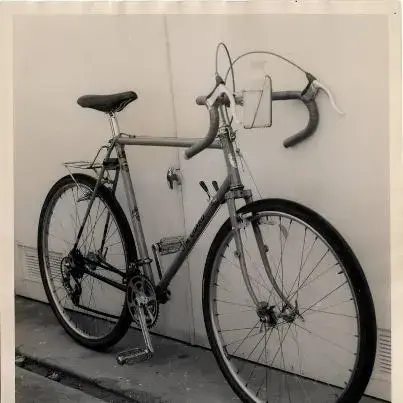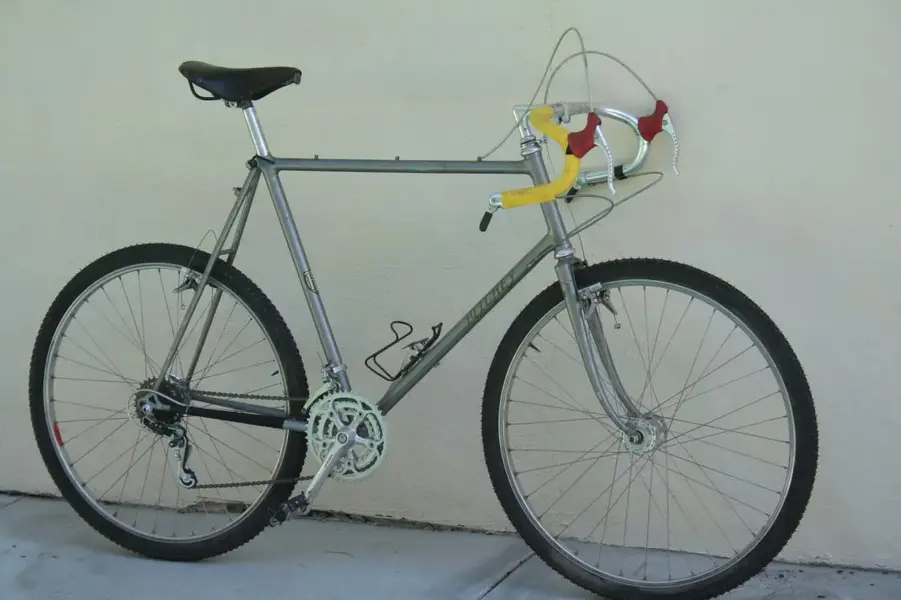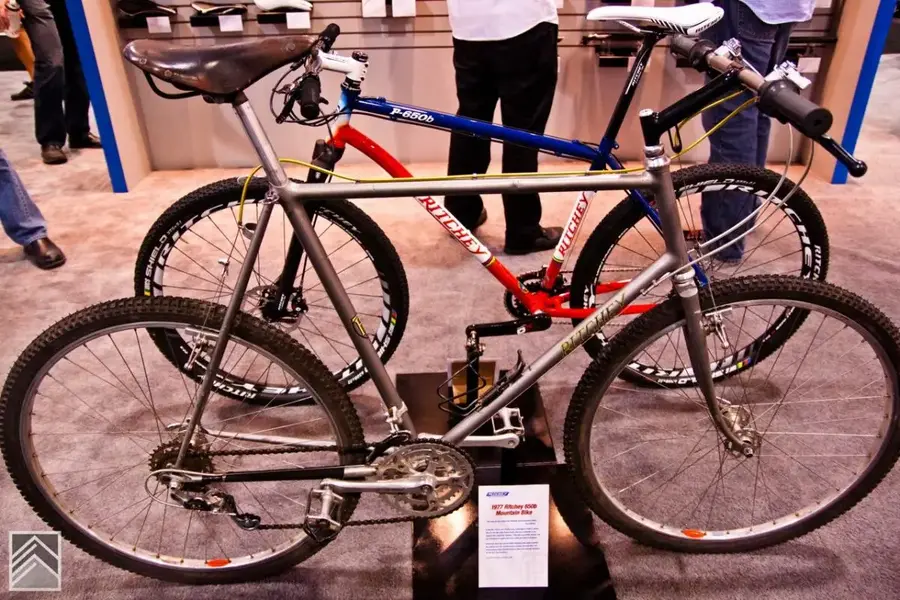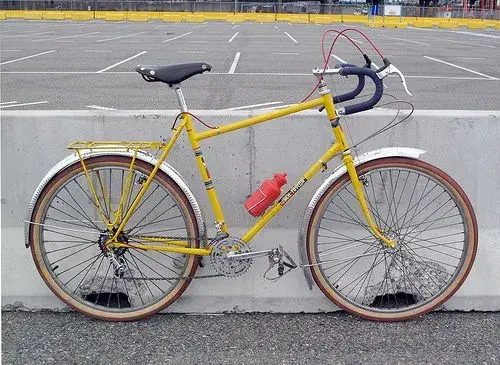- Feedback
- View
Re:
In this article Tom Ritchey uses a photo of a bicycle that he claims to be the original 1977 650b mountain bike that he built for John Finley Scott.
http://mbaction.com/uncategorized/tom-r ... ain-biking
However the same photo has been previously posted in an article where its current owner asks Lenard Zinn, a franebuilder who worked for Tom Ritchey BiTD. In this article Zinn compares the bike to his own 650b Ritchey Competition from 1983, and gives advice on how it should be restored:
http://www.velonews.com/2012/07/mtb/tec ... 50b_252332
The above style of bike was sold by Jack Taylor from 1953. This stye of bicycle was fitted with French 650b 'Randonneur' balloon tyres.
There is convincing documentary evidence that Tom Ritchey built an English style Roughstuff bike for John Finlay-Scott circa 1978. However, I don't know why, in the absence of photos of that bike, he needs to cite pictures of other 650b wheeled mountain bikes that he built years later in the early 1980s?
In this article Tom Ritchey uses a photo of a bicycle that he claims to be the original 1977 650b mountain bike that he built for John Finley Scott.
http://mbaction.com/uncategorized/tom-r ... ain-biking
However the same photo has been previously posted in an article where its current owner asks Lenard Zinn, a franebuilder who worked for Tom Ritchey BiTD. In this article Zinn compares the bike to his own 650b Ritchey Competition from 1983, and gives advice on how it should be restored:
http://www.velonews.com/2012/07/mtb/tec ... 50b_252332
The above style of bike was sold by Jack Taylor from 1953. This stye of bicycle was fitted with French 650b 'Randonneur' balloon tyres.
There is convincing documentary evidence that Tom Ritchey built an English style Roughstuff bike for John Finlay-Scott circa 1978. However, I don't know why, in the absence of photos of that bike, he needs to cite pictures of other 650b wheeled mountain bikes that he built years later in the early 1980s?



